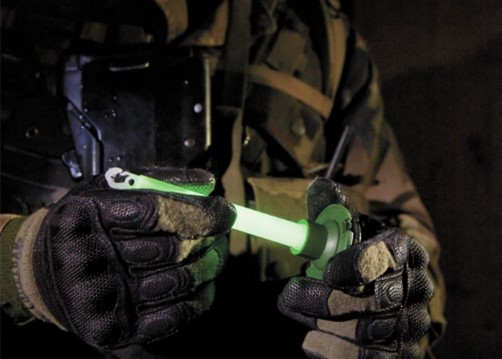Combat Technology
Optical and Optronic Equipment
Optronics or optoelectronics are electronic systems that provide, detect, and control light, including its invisible forms of radiation such as gamma rays, x-rays, ultraviolet and infrared, and visible light. Optronic devices are electrical-optical or optical-electrical transducers or equipment that employ these devices in their operation.
In the segments of National Defense and Public Security, optronic equipment can be light and portable, for individual use by ground and airborne forces, or heavy and fixed, for installation in air, land and surface vehicles.
Among the portable equipment, for individual use, there are binoculars, monoculars, lunettes, sights, wind and distance calculators for shooting, devices for infrared vision, night vision and mixed technology or optical fusion, which incorporate the reading technologies of the visible spectrum, night vision and thermographic vision in a single piece of equipment. Robust and simple to operate, they are designed for combat missions and employed mainly by airborne units, ground infantry, and special forces. They provide high capacity for searching, identifying and designating targets. Modular and interoperable, with multiple features and functions, they can be interconnected with telecommunications systems and networks. Fixed equipment presents similar characteristics, however, with greater performance because it normally employs more robust systems both in terms of optics and onboard electronics.
Night Vision Systems
Among the most interesting optronics are those that allow expanding the limits of human vision, especially NVGs - Night Vision Goggles, which we will discuss next.
The retina of the human eye has elements called cones, which allow the recognition of colored light, and rods, which recognize subtle movements in low light, but do not recognize colors. The number of rods (about 120 million) is much larger than the number of cones (about 6 million), which makes humans ill-equipped to see in the dark. Some nocturnal animals have a different eye structure, with a much larger amount of cones and a reflective structure that allows light amplification and therefore excellent night vision.
Night vision goggles employ a system similar to that of sound amplifiers. They turn light into an electrical signal, amplify that signal, and turn that electrical signal back into light. Simple in description, but not so simple in implementation, as can be seen below:
In a simplified explanation, considering the picture beside, we will have the following steps:
- The faint light from a night scene enters through the front lens, remembering that it is composed of photons (light particles) of all colors (different frequencies)
- As light energy (photons) strikes the photocathode, it is converted into electrical energy.
- The electric current is amplified in the photomultiplier, a type of photoelectric cell.
- The electrons leaving the photomultiplier hit a phosphor screen, similar to the screen on an old television. When the electrons hit the phosphor, they create little flashes of light (photons).
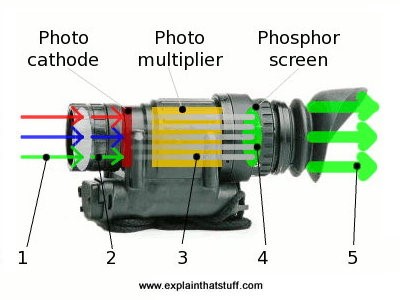
Since there are many more photons in the output than entered the device, the output screen ends up creating a much brighter version of the original scene.
Image intensifier tubes used in night vision systems are classified by their two main performance characteristics, which are resolution and signal-to-noise ratio (SNR). The resolution of an intensifier tube is expressed in lp/mm (line pairs per millimeter) and determined experimentally for each tube at the factory. Resolutions starting at 60 lp/mm offer high levels of detail in an image. The signal-to-noise ratio (SNR) is a dimensionless value that determines the performance of the tube in low-light conditions and is determined by dividing the light signal reaching the operator's eyes by the perceived noise. Consider that noise is any amplified signal that does not relate to the desired image and impairs its perception. Normally, a good performing tube should have an SNR equal to or greater than 20. This means that the signal received by the tube is at least twenty times more intense than the background noise
The Figure of Merit or FOM is a parameter that defines the overall performance of a tube and is calculated by multiplying the resolution value by the signal-to-noise ratio, i.e. FOM = Resolution X SNR. It is worth noting that each tube is slightly different, even within the same production lot. This is why manufacturers provide FOM ranges rather than exact values. The advancement of technology employed in NVGs has continually sought to improve both the resolution and the signal-to-noise ratio of the equipment.
When purchasing a night vision device, the customer should also receive a specification sheet for the image intensifier tube that describes the characteristics of the tube and its compliance with the advertised specifications.
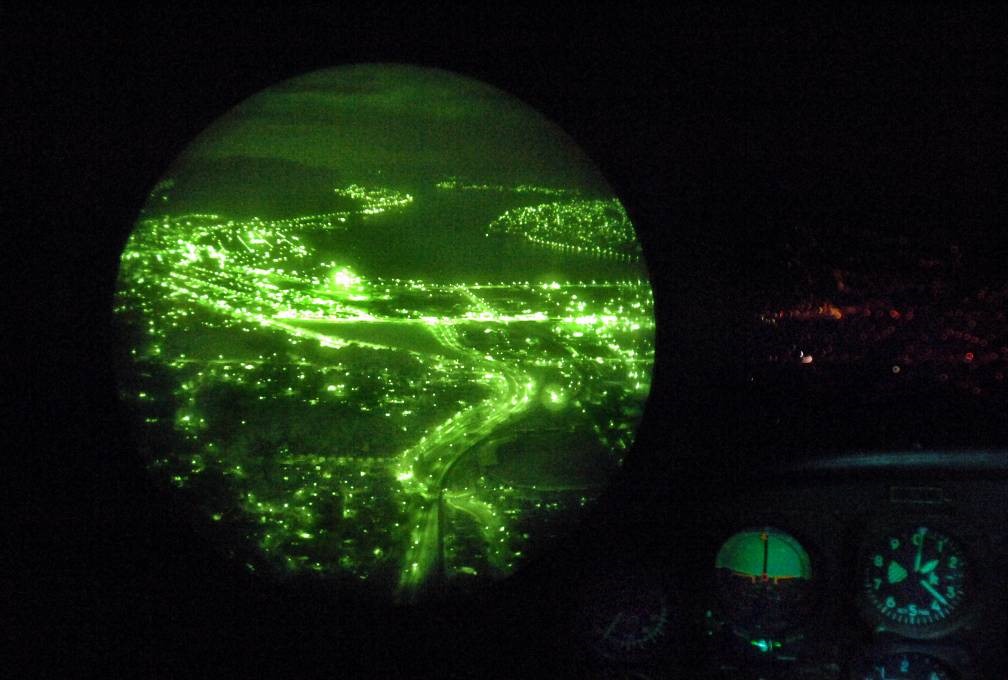
Infrared Detection Systems
Infrared energy is only one part of the electromagnetic spectrum, which comprises gamma rays, x-rays, ultraviolet radiation, a thin region of visible light, infrared, terahertz waves, microwaves, and radio waves, which are differentiated by their wavelength. All objects emit a certain amount of radiation as a function of their temperature. Generally speaking, the higher the temperature of an object, the more infrared radiation is emitted. A special camera can detect this radiation in a similar way to how an ordinary camera detects visible light. It works even in total darkness, because the ambient light level does not matter.
Thermal imaging cameras, also called infrared cameras, thermal imagers, or thermal imagers, are devices that can remotely detect infrared energy and convert it into an electronic signal that is processed to produce a video monitor image, whose colors or hues vary depending on the temperature of the object being viewed. They work in a similar way to ordinary visual cameras, but instead of the 400 to 700 nanometer range of visible light, infrared cameras are sensitive to radiation with wavelengths from about 1,000nm (1μm) to about 14,000nm (14μm), corresponding to the infrared range that is not visible to the naked eye.
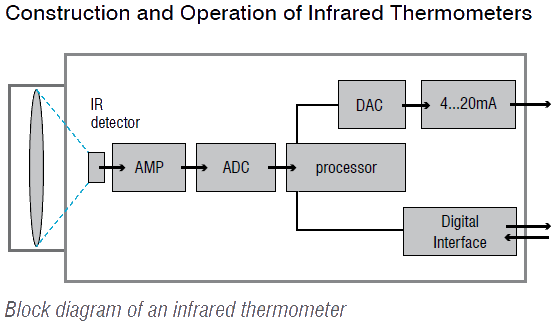
The heat detected by an infrared camera can be quantified very accurately, making it possible not only to monitor thermal performance, but also to identify and assess the intensity of faults that may be related to the heat produced by the monitored equipment. This type of equipment also allows you to view people and objects in total darkness, as long as there is some thermal contrast around.
One major difference to ordinary optical cameras is that the focusing lens cannot be made of glass, as it blocks long-wave infrared light. Special materials such as germanium, calcium fluoride, and crystalline silicon have been employed. Except for calcium fluoride, all these materials are very hard and have a high refractive index (for germanium n=4), which leads to a very high Fresnel reflection from uncoated surfaces (up to more than 30%). For this reason, most lenses for thermal cameras have anti-reflective coatings. The higher cost of these special lenses is one reason why thermal imaging cameras are so expensive.
Images from infrared cameras tend to be monochromatic, because they employ an image sensor that cannot distinguish between different wavelengths of infrared radiation. Color imaging sensors require a more complex construction to differentiate wavelengths, and color has less meaning outside the normal visible spectrum, because the different wavelengths are not mapped uniformly in the color vision system perceived by humans. Sometimes these monochromatic images are displayed in pseudo color or "false colors", i.e. colors that do not correspond to those of the object but to a certain temperature intensity. Usually the brighter (warmer) parts of the image are usually white, the intermediate temperatures are red and yellow, and the darker (colder) parts are black. A scale must be shown next to a false color image to relate the colors shown to the temperatures. The resolution is considerably lower than that of optical cameras, 160 x 120 or 320 x 240 pixels, although more expensive cameras can achieve a resolution of 1280 x 1024 pixels.
Professional thermal imaging cameras are much more expensive than visible spectrum cameras, and can even be cooled for better performance. Despite this, there are lower performance thermal cameras for smartphones that are available at lower prices.
Thermal imaging cameras can be divided into cooled and uncooled. Cooled cameras are usually contained in a vacuum-sealed housing and cooled by cryogenics. Cooling is required for the operation of the semiconductor materials used. Typical operating temperatures range from 4 K to slightly below room temperature, depending on the detector technology. Most modern cooling detectors operate in the range of 60 K to 100 K (-213 to -173°C), depending on type and performance level. Without cooling, those that detect and convert light would be swamped by their own radiation. The disadvantages of cooling infrared cameras are the high cost of production and operation. Cooling consumes a lot of energy and requires space and some time before the equipment is in working order. However, cooled infrared cameras offer superior image quality compared to uncooled cameras. In addition, the higher sensitivity of cooled cameras also allows the use of lenses with larger apertures, making high-performance long focal length lenses smaller and cheaper for cooled detectors. An alternative to Stirling engine coolers is to use high-pressure bottled gases, nitrogen being a common choice. The pressurized gas is expanded through a micro-sized orifice and passed through a miniature heat exchanger, resulting in regenerative cooling by the Joule-Thomson effect. For such systems, the supply of pressurized gas is a logistical concern for field use.
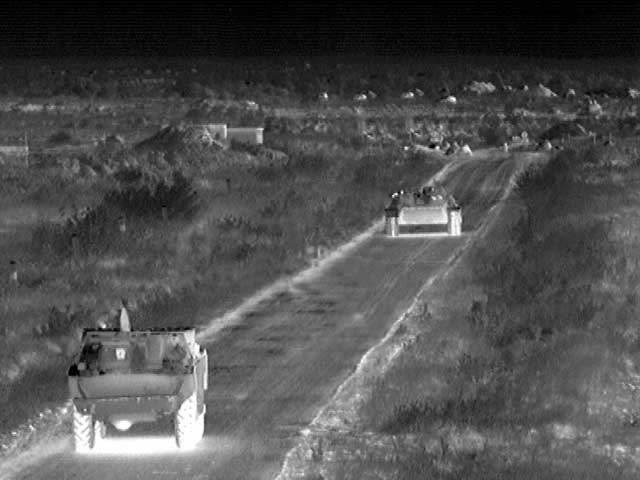
Uncooled thermal imagers use a sensor that operates at room temperature, or a sensor stabilized at near room temperature using small temperature control elements. All modern uncooled detectors use sensors that work by changing resistance, voltage, or current when heated by infrared radiation. These changes are measured and compared with values at the sensor's operating temperature. These sensors can be stabilized at an operating temperature to reduce image noise, but they are not cooled to low temperatures and do not require bulky, expensive, and energy-consuming cryogenic coolers. This makes these types of infrared cameras smaller and less expensive. However, their resolution and image quality tend to be lower than that of cooled detectors. An uncooled thermal camera also has to deal with its own heat signature.
Like high-performance NVGs (high FOM), high-resolution, high-performance thermal cameras may have an export restriction from some countries for strategic reasons.
Thermal imaging finds many jobs other than military. Firefighters can use the equipment to see through smoke, find people, and locate fire hot spots; with thermal imaging, transmission line maintenance technicians locate connectors and overheating parts; flaws in thermal insulation can be easily located, and construction technicians can see heat leaks to improve the efficiency of cooling or heating air-conditioning systems; hot parts on animals and people can mean diseases that can be easily diagnosed. Thermal imaging cameras are also installed in some vehicles to help the driver see under degraded conditions of conventional vision (night, heavy rain, fog, smoke, etc.). Some physiological changes, particularly those resulting in fever, in both humans and other warm-blooded animals can also be monitored with thermographic images.
Optical Fusion Systems
Optically fused optronic devices are a combination of the light amplification systems found in night vision devices and thermal scanning systems. They typically have separate sensors for each of the two internal systems. It is basically a combination of an image intensifier tube and a thermal (IR) microbolometer in one compact unit. Devices of this design typically have three modes of operation: a) image intensifier only; b) thermal viewer only; and c) fusion of image intensifier with thermal viewer.
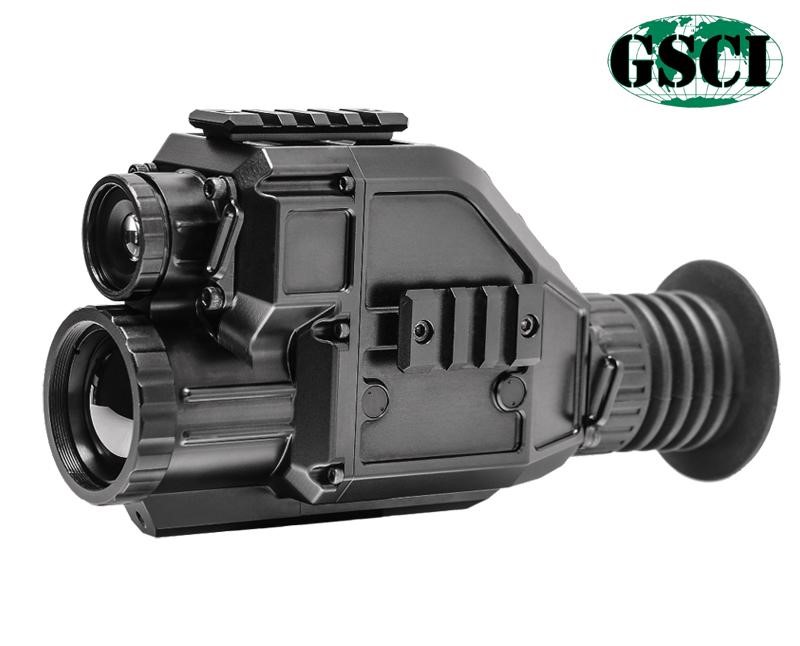
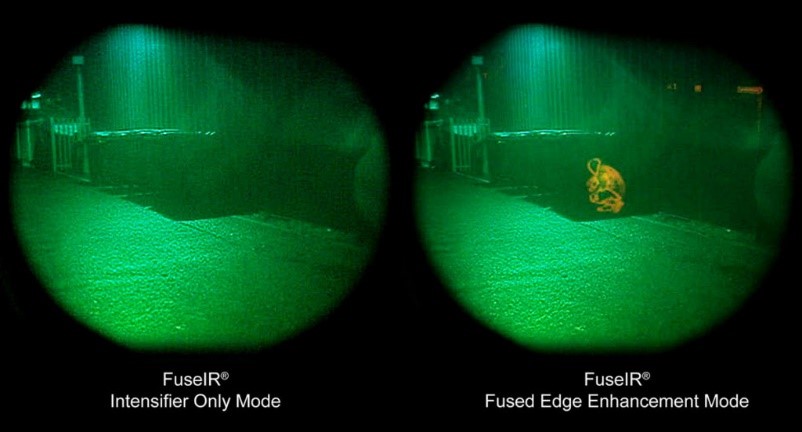
Optical fusion systems have the advantage of better situational awareness due to increased threat detection capability compared to the two stand-alone systems. They operate under any visibility conditions, from high light to total darkness, and represent the state of the art of optronic systems.
The resulting better image quality allows some more advanced devices to incorporate artificial intelligence technology for face recognition, enabling the identification of targeted persons.
Holographic Sights
A holographic sight or holographic diffraction sight is a non-amplification aiming system that allows the shooter to look through an optical glass window and see a holographic reticle image superimposed at a distance in the field of view. The holographic reticle is embedded in the window and is illuminated by a laser diode.
Holographic weapon sights use a laser transmission hologram of a reticle image that is recorded in three-dimensional space on a holographic film at the time of manufacture. This image is part of the optical viewing window. The recorded hologram is illuminated by collimated light from a laser diode built into the crosshair. The crosshair can be adjusted for target distance and prevailing wind by simply tilting or rotating the holographic grating. To compensate for any change in laser wavelength due to temperature, the sight employs a holographic grating that disperses the laser light by an equal amount, but in the opposite direction to the hologram that forms the aiming reticle. Like the reflective ones, the holographic sight is also not free from parallax, and the aiming point can move according to the position of the eye. This can be compensated with a holographic image set at a finite distance with parallax, due to the eye movement being the size of the optical window at close range and decreasing to zero at the set distance (usually around 100 meters range).
Since the reticle is a transmission hologram, illuminated by a laser that shines through the hologram, presenting a reconstructed image, it is not necessary for the sight window to be partially blocked by a mirror coating to reflect the image. The optical window of a holographic sight looks like a piece of transparent glass with an illuminated reticle in the middle. This crosshair can be a very small dot, whose boundary is determined by the acuity of the eye. For someone with 20/20 vision, about 1 minute of arc.
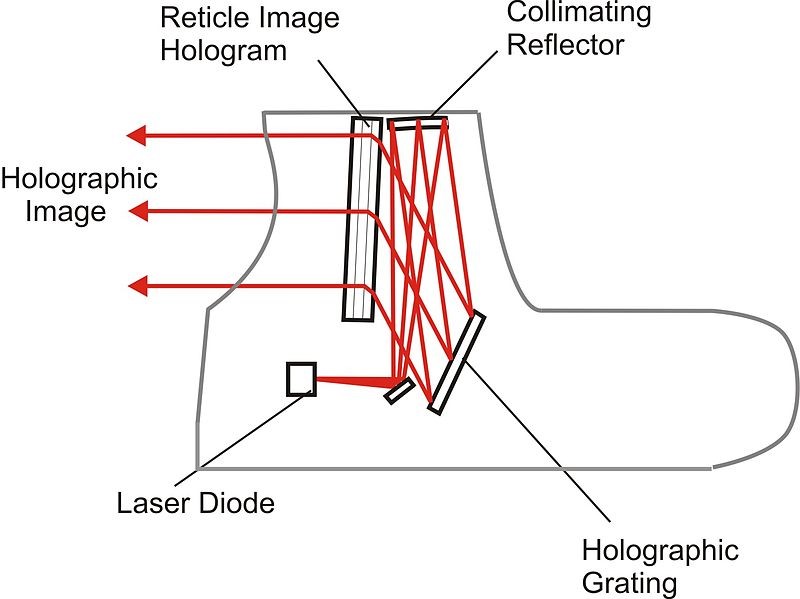
Holographic sights are generally superior to red dot sights for most applications. However, holographic staffs also have disadvantages. They are bulkier and considerably more expensive than traditional staffs, due to the technology employed and the small number of manufacturers. They have a shorter battery life when compared to LED-based reflective sights. The laser diode consumes more power and has more complex driving electronics than a standard LED of equivalent brightness, reducing the amount of time that a holographic sight can operate on a single set of batteries (about 100 hours).
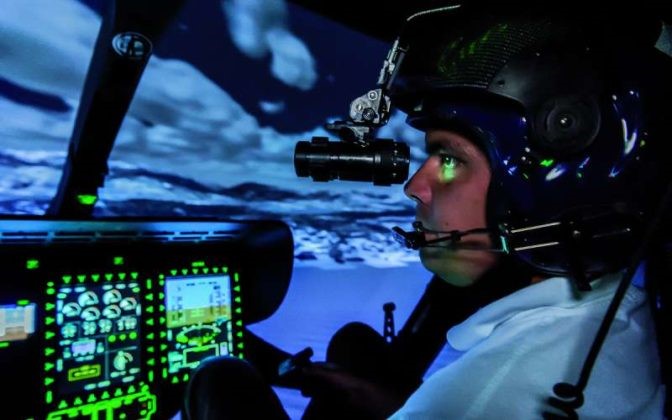
QUARTZO Defense Engineering has a wide and complete line of latest-generation optronic devices, including night vision goggles for both aeronautic use and for ground forces and special tactical units, latest-generation cameras and thermal sensors, fusion-optics devices, which incorporate the visible spectrum, night vision, and thermographic vision technologies into a single piece of equipment, and holographic sights. It also has Tritium sights, target designators, distance and wind calculators, and multiple range telescopes, in conventional or advanced versions, which allow optical coupling with optronic devices.
The optronics offered by QUARTZO have a robust construction and are combat-proven, yet lightweight, compact and portable, so as not to hinder the operationality of the user. They are always reliable and capable of meeting the most rigorous operational requirements established by the national defense and public security forces. Come meet our line of optronic devices.
Tactical Communication Devices
In the midst of operational action, clear communication can mean the difference between life and death. For the field agent, efficient tactical communication tools are essential both for communicating with the driver, pilot, or elements responsible for infiltration and evacuation, and for receiving up-to-date information and guidance from command or observation posts, in order to locate and identify targets accurately and ensure mission success. Communication between team members is also fundamental to better coordinate actions and avoid any possibility of friendly fire.
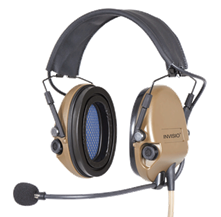
QUARTZO Defense Engineering provides systems that offer complete communication functionality for the most different operational scenarios, whether on board some type of maritime, air or land vehicle or on the ground, in teams or alone. Among the most diverse items that make up the communication set, whether for public or private security agents or for elements of firefighting, rescue and salvage teams, are in-ear headsets, over-ear headsets, submersible headsets, multifunctional PTT units and intercom boxes, among others.
The most modern in-ear headphone systems on the market use bone conduction technology instead of traditional sound wave technology, which greatly reduces unwanted noise. They work with a small and comfortable sensor that is able to detect the vibrations of the user's jaw, converting these vibrations into sound signals, providing crystal clear communication even if the transmitter element is under extreme external noise conditions and speaks in very low tones (whispering).
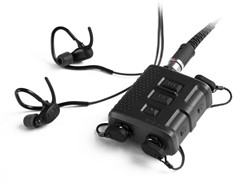
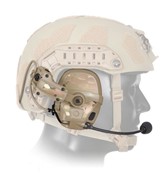
Over-ear headphones are powered and driven by a control unit. Although larger, they are light and easy to use, with no need to use an internal battery or push buttons. Lightweight and able to be submerged up to 1 meter deep, with a flexible boom microphone. May have active noise reduction capabilities, making it comfortable to use and free of unwanted noise.
When it comes to structuring the multiple communications of a mission into a single system, QUARTZO provides a control unit with a high quality and capacity PTT, which, in the possession of a lead officer or operation commander, becomes indispensable to enable dynamic and simultaneous access to different communication channels, including radios from different networks, smartphones, tactical headsets, and intercoms such as land, sea, and air vehicles. The device allows for optimized and simplified control of a range of different communication media and is even capable of submerging to a depth of 20 meters.
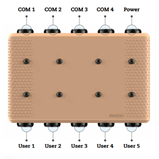
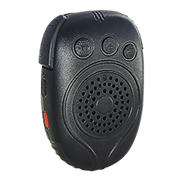
Having a modern, reliable and high-capacity tactical communication system is essential for military or police force modernization programs. A good communication system employs advanced digital signal processing and miniaturized audio components and ergonomic headset design to provide the most faithful hearing possible. With this they are able to offer the user comfort, reliability, hearing protection, and superior audio quality, providing tactical teams with excellent situational awareness, natural sound, and precise directionality, while providing protection from ambient noise that would impede understanding of messages, such as that generated by vehicles and aircraft, as well as from potentially damaging intense noise, such as gunshots and explosions.
For military and public security forces, private security teams, firefighting and rescue teams, having modern systems capable of providing clear communication, even in noisy environments, with high hearing protection, becomes a tactical advantage that can save lives. QUARTZO Defense Engineering makes available in its portfolio communication devices and accessories fully compatible with the most diverse models of operational helmets, ballistic or not, goggles, breathing devices and mufflers. Systems that adapt perfectly to the different hearing profiles and provide a significant improvement over traditional models.
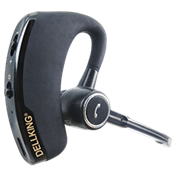
Signaling Devices
Além da capacidade de enxergarem e se comunicarem, os elementos das forças de segurança e de preservação da vida também necessitam serem vistas e eventualmente identificadas, seja para que possam ter sua trajetória de avanço acompanhada ou para que seus elementos possam se reconhecer mutuamente, ainda que sob condições de visibilidade reduzida, tais como operação noturna. Em situações de emergência, essa sinalização torna-se ainda mais necessária, exigindo uma correta aplicação dos diferentes tipos de sinalizadores luminosos, tais como bastões luminosos de curta e longa duração, fitas e adesivos reflexivos (do tipo “olho de gato”) ou fosforescentes, ou sinalizadores pessoais ativos em espectro visível ou infravermelho.
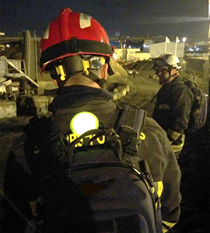
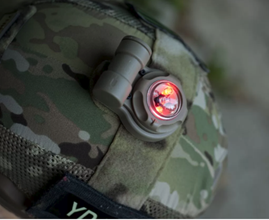
In addition to the ability to see and communicate, the elements of the security and life preservation forces also need to be seen and eventually identified, either so that they can have their advance path followed or so that their elements can recognize each other, even under conditions of reduced visibility, such as night operations. In emergencies, this signaling becomes even more necessary, requiring the correct application of different types of beacons, such as luminous poles of short and long duration, reflective tapes and adhesives ("cat's eye" type) or phosphorescent, or active personal beacons in visible or infrared spectrum. Active personal flares may be attached to helmets or parts of the uniform, and must have a battery that provides capacity to allow full operational mission accomplishment. Those that emit light in the visible spectrum are usually employed by firefighting or rescue teams. Public security forces normally only use beacons with visible spectrum light on elements that are performing ostensible policing, so that they can be better and more easily recognized by the general public
On the other hand, elements of special forces or elite forces usually use flares emitting light in the non-visible spectrum (infrared) so that they can only be seen and recognized by elements of friendly troops wearing night vision goggles. It is important to emphasize that in night combat under conditions of low or zero visibility, it can be difficult, even when wearing night vision goggles, to recognize and differentiate between friendly and enemy elements.
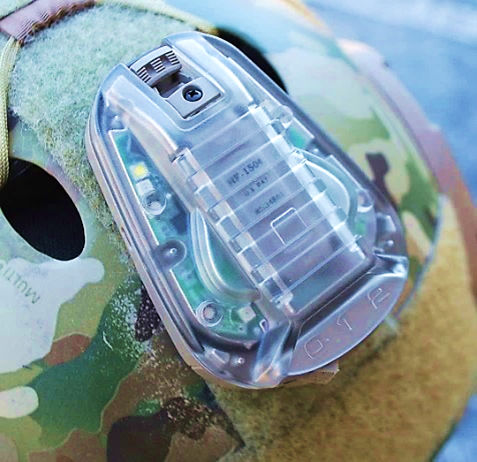
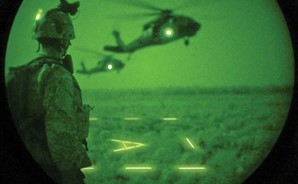
For this reason, equipping friendly troops with infrared light beacons is fundamental for the proper recognition of these elements and the important reduction of the possibility of casualties by friendly fire. Some individual signaling equipment operate in water in order to contribute to the organized displacement of underwater demolition teams or special forces in underwater displacement.
Signaling equipment can also be employed for area signaling for parking of land vehicles, docking of surface or underwater vehicles, and aircraft landing. With similar operation, they can emit in both the visible and infrared spectrum, as required.
Employing advanced technology and high quality components, the luminous devices and individual and area beacons commercialized by QUARTZO Defense Engineering are among the lightest and most reliable in the international market. Developed and tested by our partners under realistic conditions, the temporary signaling products offer high quality and adequate duration to accomplish the desired mission.
